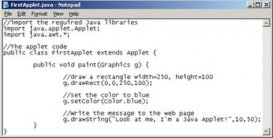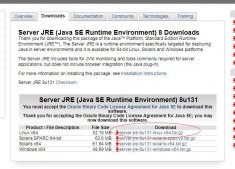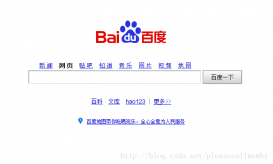SpringBoot中整合Redis
本次,我们以IDEA + SpringBoot作为 Java中整合Redis的使用 的测试环境,如果对创建SpringBoot项目有不清楚的地方,可以参考这篇文章:使用Idea创建我的第一个SpringBoot项目
首先,我们需要导入Redis的maven依赖
|
1
2
3
4
5
|
<!-- Redis的maven依赖包 --> <dependency> <groupId>org.springframework.boot</groupId> <artifactId>spring-boot-starter-data-redis</artifactId> </dependency> |
其次,我们需要在配置文件中配置你的Redis配置信息,我使用的是 .yml文件格式
|
1
2
3
4
5
6
7
8
9
10
11
12
13
14
15
16
17
18
19
20
21
|
# redis配置spring: redis: # r服务器地址 host: 127.0.0.1 # 服务器端口 port: 6379 # 数据库索引(默认0) database: 0 jedis: pool: # 连接池最大连接数(使用负值表示没有限制) max-active: 50 # 连接池最大阻塞等待时间(使用负值表示没有限制) max-wait: 3000ms # 连接池中的最大空闲连接数 max-idle: 20 # 连接池中的最小空闲连接数 min-idle: 2 # 连接超时时间(毫秒) timeout: 5000ms |
然后,我们需要创建一个RedisUtil来对Redis数据库进行操作
|
1
2
3
4
5
6
7
8
9
10
11
12
13
14
15
16
17
18
19
20
21
22
23
24
25
26
27
28
29
30
31
32
33
34
35
36
37
38
39
40
41
42
43
44
45
46
47
48
49
50
51
52
53
54
55
56
57
58
59
60
61
62
63
64
65
66
67
68
69
70
71
72
73
74
75
76
77
78
79
80
81
82
83
84
85
86
87
88
89
90
91
92
93
94
95
96
97
98
99
100
101
102
103
104
105
106
107
108
109
110
111
112
113
114
115
116
117
118
119
120
121
122
123
124
125
126
|
package com.zyxx.test.utils;import org.springframework.beans.factory.annotation.Autowired;import org.springframework.data.redis.core.RedisTemplate;import org.springframework.stereotype.Component;/** * @ClassName RedisUtil * @Author Lizhou * @Date 2019-08-03 17:29:29 * @Version 1.0 **/@Componentpublic class RedisUtil { @Autowired private RedisTemplate<String, String> template; /** * 读取数据 * * @param key * @return */ public String get(final String key) { return template.opsForValue().get(key); } /** * 写入数据 */ public boolean set(final String key, String value) { boolean res = false; try { template.opsForValue().set(key, value); res = true; } catch (Exception e) { e.printStackTrace(); } return res; } /** * 根据key更新数据 */ public boolean update(final String key, String value) { boolean res = false; try { template.opsForValue().getAndSet(key, value); res = true; } catch (Exception e) { e.printStackTrace(); } return res; } /** * 根据key删除数据 */ public boolean del(final String key) { boolean res = false; try { template.delete(key); res = true; } catch (Exception e) { e.printStackTrace(); } return res; } /** * 是否存在key */ public boolean hasKey(final String key) { boolean res = false; try { res = template.hasKey(key); } catch (Exception e) { e.printStackTrace(); } return res; } /** * 给指定的key设置存活时间 * 默认为-1,表示永久不失效 */ public boolean setExpire(final String key, long seconds) { boolean res = false; try { if (0 < seconds) { res = template.expire(key, seconds, TimeUnit.SECONDS); } } catch (Exception e) { e.printStackTrace(); } return res; } /** * 获取指定key的剩余存活时间 * 默认为-1,表示永久不失效,-2表示该key不存在 */ public long getExpire(final String key) { long res = 0; try { res = template.getExpire(key, TimeUnit.SECONDS); } catch (Exception e) { e.printStackTrace(); } return res; } /** * 移除指定key的有效时间 * 当key的有效时间为-1即永久不失效和当key不存在时返回false,否则返回true */ public boolean persist(final String key) { boolean res = false; try { res = template.persist(key); } catch (Exception e) { e.printStackTrace(); } return res; } } |
最后,我们可以使用单元测试来检测我们在RedisUtil中写的操作Redis数据库的方法
|
1
2
3
4
5
6
7
8
9
10
11
12
13
14
15
16
17
18
19
20
21
22
23
24
25
26
27
28
29
30
31
32
33
34
35
36
37
38
39
40
41
42
43
44
45
46
47
48
49
50
51
52
53
54
55
56
57
58
59
60
61
62
63
|
package com.zyxx.test;import com.zyxx.test.utils.RedisUtil;import org.junit.Test;import org.junit.runner.RunWith;import org.springframework.boot.test.context.SpringBootTest;import org.springframework.test.context.junit4.SpringRunner;import javax.annotation.Resource;@RunWith(SpringRunner.class)@SpringBootTestpublic class TestApplicationTest { @Resource private RedisUtil redisUtil; @Test public void setRedis() { boolean res = redisUtil.set("jay", "周杰伦 - 《以父之名》"); System.out.println(res); } @Test public void getRedis() { String res = redisUtil.get("jay"); System.out.println(res); } @Test public void updateRedis() { boolean res = redisUtil.update("jay", "周杰伦 - 《夜的第七章》"); System.out.println(res); } @Test public void delRedis() { boolean res = redisUtil.del("jay"); System.out.println(res); } @Test public void hasKey() { boolean res = redisUtil.hasKey("jay"); System.out.println(res); } @Test public void expire() { boolean res = redisUtil.setExpire("jay", 100); System.out.println(res); } @Test public void getExpire() { long res = redisUtil.getExpire("jay"); System.out.println(res); } @Test public void persist() { boolean res = redisUtil.persist("jay"); System.out.println(res); } } |
推荐使用Redis客户端(redis-desktop-manager)来查看Redis数据库中的数据
至此,我们在日常项目中整合Redis的基本使用操作就完成了,但在实际项目中,可能会涉及到更复杂的用法,可以根据你的业务需求调整Redis的使用即可。
SpringBoot整合Redis改不了database问题
关于学习redis写的yaml文件,里面的
|
1
2
3
4
5
6
|
redis: database: 15 host: 127.0.0.1 port: 6379 password: timeout: 3000ms # 连接超时时间(毫秒) |
但是springboot自动装配一直是database为0
最后发现是没有找到我配置的redis,默认是用的自动装配的默认地址(所以我一直以为我的yaml写对了,但是没用写对,因为一直没有取到我的值)
自动装配的就是
database=0,port=6379;无密码,host=localhost,
就是因为这个原因,我写的数据能进入我的本地redis中,所以我一直没找到问题,因为我也使用的本地的redis测试的,一直找不到为什么改不了database。
最后发现是我的yaml文件的redis写错了,把redis写到log下面,并且归属于log。
最后该成归属于spring下面就可以了。
注意:一定要注意yaml的书写规范和上下级的关系。
深刻的教训,我在网上查了很多,也没找到对应的办法,幸好没有,不然的话,我的代码会被改的乱七八糟的,花了一下午才发现是自己yaml写错了。
以上为个人经验,希望能给大家一个参考,也希望大家多多支持服务器之家。
原文链接:https://lizhou.blog.csdn.net/article/details/98358258















